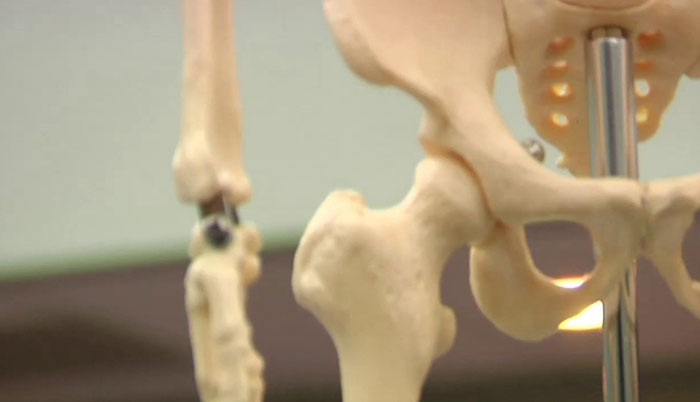![]() Home > Health
Home > Health
Modern Bone Healing: Scientists Design Device That Helps Accelerate Bone Regeneration

![]() April 14th, 2021 | 12:34 PM |
April 14th, 2021 | 12:34 PM | ![]() 302 views
302 views
NATURALNEWS
As many as 6.3 million cases of bone fracture are reported in the U.S. annually. While the body usually begins to repair itself within minutes of a fracture’s occurrence, that process can sometimes be impaired. This can result in debilitating injuries.
As a way to address the latter, surgeons at the University of Michigan Medicine (U-M) are now developing a device that can help accelerate bone regeneration.
As described in the journal Regenerative Medicine, this development is anchored on the stimulation of the angiogenesis process, the phase of blood vessel development critical to bone healing.
“We are developing ways to allow bones to heal when they otherwise wouldn’t by looking at introducing blood vessels,” said lead author Alexis Donneys, a surgery researcher at the U-M.
According to Donneys, their approach is based on delivering a combination of stimulants — namely hyaluronic acid and deferoxamine — into a fracture in order to grow bone.
Initial testing has shown that the therapy dramatically accelerates bone healing after injury. The research team noted that the process could prove life-changing for adults who suffer from non-healing fractures.
A non-healing fracture, also called a nonunion, occurs when the pieces of a broken bone do not grow back together.
According to doctors, this usually happens when the bone fragments are not reassembled and stabilized, or if the injury that caused the fracture has also damaged blood vessels.
This type of fracture, according to experts at NYU Langone Health, usually occurs in the humerus, or upper arm, and the tibia, or lower leg.
Despite the debilitating nature of this condition, however, it remains a relatively rare occurrence, with an average overall rate of 1.9 percent. Of this, 1.5 percent occur in adult women, while 2.3 percent occur in adult men.
New system boosts bone reunion rate
To introduce the hyaluronic acid and deferoxamine into the fractures, surgery and pharmacy professors Mark Cohen and Laird Forrest designed a novel implantable drug delivery system.
“This modified method for administering hyaluronic acid and deferoxamine with an implantable device eliminates the need for repeat injections,” Donneys explained. He added that the method is beneficial for patients since it eliminates not just pain and discomfort but also the potential for infection.
Dubbed “Ferroximend,” the device delivers the stimulants gradually to the fracture site during the critical period of angiogenesis. Researchers say that it can help patients and doctors contending with non-healing fractures and injuries.
“We want to do a lot better for patients to help avoid debilitating and disfiguring complications, and improve their quality of life in a way we haven’t seen yet,” Donneys said.
Donneys and his team applied the hyaluronic acid and deferoxamine delivery method to animals that had undergone radiation therapy. Radiation therapy has detrimental effects on bone development, such as osteopenia and growth arrest.
The researchers found that the animals treated with hyaluronic acid and deferoxamine had a 91 percent bone union rate – a figure three times higher than the rate shown by the untreated animals.
“If you can grow bone in a nuclear winter, you can grow bone anywhere,” said study co-author Steven R. Buchman, a craniofacial plastic surgeon at Michigan Medicine. Buchman added that the team hopes to see Ferroximend – which earned the U-M’s department of surgery’s 2018 Michigan Surgical Innovation prize – used in operating rooms.
Non-healing fractures and other similar injuries can be very debilitating and painful and are often only solved through overly invasive and cumbersome procedures such as electronic bone stimulation and bone grafts.
Source:
courtesy of NATURALNEWS
by Michael Alexander
If you have any stories or news that you would like to share with the global online community, please feel free to share it with us by contacting us directly at [email protected]